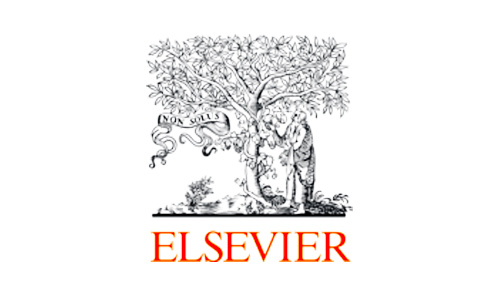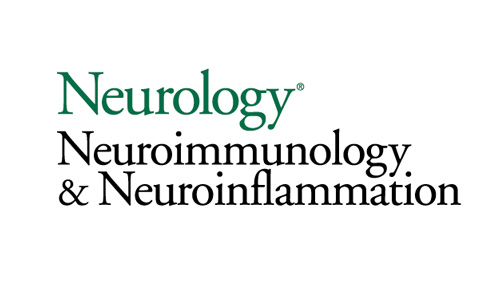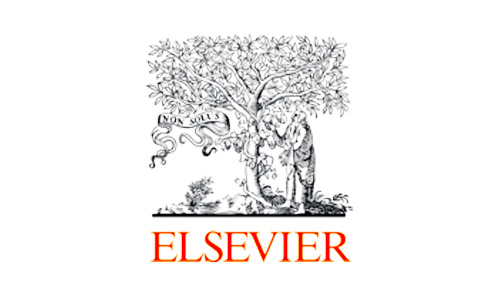- Follow Us
Scientific Publications
High-profile publications featuring CDI Labs next-gen proteomics technologies and services
354 Total Publications
Refine Your Search
Publication Details
- Date
- Link
- + Abstract

Elsevier - Phytomedicine
- Main Product: HuProt
- Zyxin—a novel detrimental target, is inhibited by Saikosaponin A during allergic asthma
- Haoyun Bai, Yongjing Zhang, Xinping Zhang, Chenjia Li, Mengyang Ma, Jie Gao, Tingting Deng, Chang Gao, Nan Wang
- School of Pharmacy, Health Science Center, Xi'an Jiaotong University
Allergic asthma is a heterogeneous disease involving numerous inflammatory cells. Mast cell (MC) plays a key role during allergic asthma. Saikosaponin A (SSA) inhibits MC activation and ameliorates allergic asthma, however, its underlying mechanism remains unclear. This study aims to identify SSA-binding proteins and reveal their functions.

Cancer Immunology, Immunotherapy
- Main Product: HuProt
- Spatial transcriptomics reveals prognostically LYZ+ fibroblasts and colocalization with FN1+ macrophages in diffuse large B-cell lymphoma
- Liyuan Dai, Ning Lou, Liling Huang, Lin Li, Le Tang, Yuankai Shi & Xiaohong Han
- Dept of Medical Oncology, Chinese Academy of Medical Sciences & Peking Union Medical College
Diffuse large B-cell lymphoma (DLBCL) is a clinically heterogeneous malignancy with diverse patient outcomes, largely influenced by the tumor microenvironment (TME). Understanding the roles of fibroblasts and macrophages within the TME is essential for developing personalized therapeutic strategies in DLBCL.

The Lancet
- Main Product: HuProt
- Establishment and Validation of an Early Detection Model for Gastric Cardia Adenocarcinoma Based on Autoantibody Serological Characteristics
- Lei Lingling, Rui Hua Xu, Meng Xia Wei, Kan Zhong, Wen Li Han, Xue Na Han, Zong Min Fan, Si Xian Yang, Ran Wang, Lei Ma,...
- Zhengzhou University
Background: Gastric cardia adenocarcinoma (GCA), which has been classified as type II adenocarcinoma of the esophagogastric junction in western countries, is similar to esophageal squamous cell carcinoma in geographical distribution, treatment methods, clinical symptoms and the adjacent localization in China, and is even called "sister cancer" by Chinese oncologists. The absence of specific early symptoms and biomarkers leads to late-stage diagnosis, while early diagnosis and biomarkers with high sensitivity and specificity are critical to improve overall survival and assess prognosis in patients with GCA.

Cellular & Molecular Immunology
- Main Product: HuProt
- γδ T-cell autoresponses to ectopic membrane proteins: a new type of pattern recognition
- Hongqin You, Xiangjin Zhang, Hui Chen, Chang Liu, Da Teng, Jiajia Han, Ming Chen, Yongsheng Pang, Jianmin Zhang, Menghua...
- Dept of Immunology, Peking Union Medical College,
T-cell receptor (TCR) γδ-expressing cells are conserved lymphocytes of innate immunity involved in first-line defense and immune surveillance. TCRγδ recognizes protein/nonprotein ligands without the help of the major histocompatibility complex (MHC), especially via direct binding to protein ligands, which is dependent primarily on the δ chain complementary determining region 3 (CDR3δ). However, the mechanism of protein‒antigen recognition by human γδ TCRs remains poorly defined. We hypothesize that γδ TCRs recognize self-proteins expressed ectopically on the cell membrane that are derived from intracellular components under stress. Here, we mapped 16 intercellular self-proteins among 21,000 proteins with a huProteinChip as putative ligands for Vδ1/Vδ2 TCRs, 13 for Vδ1 TCRs and 3 for Vδ2 TCRs.

Neurology
- Main Product: HuProt
- Modulator of VRAC Current 1 Is a Potential Target Antigen in Multiple Sclerosis
- Johannes Raffael Dahl, Alicia Weier, Christopher Winter, Maik Hintze, Veit Rothhammer, Thanos Tsaktanis, Anne-Katrin...
- Institute of Anatomy and Cell Biology, Friedrich-Alexander-Universität Erlangen-Nürnberg
Multiple sclerosis (MS) is a chronic immune-mediated demyelinating disease of the CNS. Highlighted by the success of B-cell–depleting therapies such as the monoclonal anti-CD20 antibodies rituximab, ocrelizumab, and ofatumumab, B cells have been shown to play a central role in the immunopathology of the disease. Yet, the target antigens of the pathogenic B-cell response in MS remain unclear.

Elsevier - Science Direct
- Main Product: HuProt
- Breaking tolerance: autoantibodies can target protein posttranslational modifications
- Kristin J Lastwika, Paul D Lampe
- Translational Science and Therapeutics Division, Fred Hutchinson Cancer Center
Autoantibodies (AAb) are an immunological resource ripe for exploitation in cancer detection and treatment. Key to this translation is a better understanding of the self-epitope that AAb target in tumor tissue, but do not bind to in normal tissue. Posttranslational modifications (PTMs) on self-proteins are known to break tolerance in many autoimmune diseases and have also recently been described in cancer.

Exploration
- Main Product: HuProt
- Saikosaponin b1 Attenuates Liver Fibrosis by Blocking STAT3/Gli1 Interaction and Inducing Gli1 Degradation
- Meiyu Shao, Xiaoqing Zhang, Jiamei Sun, Hongyan Dong, Xin Han, Qiao Yang, Roufen Chen, Liteng Shen, Lei Xu, Lu Wang, Bo...
- School of Pharmacy, The First Affiliated Hospital, Zhejiang Chinese Medical University
Saikosaponin b1 (Ssb1), a natural oleanane-type triterpenoid saponin, exhibits antifibrosis activity by inhibiting the activation of hepatic stellate cells (HSCs), but the specific underlying molecular mechanisms are unknown. Here, it is found that Ssb1 could directly bind with the signal transducer and activator of transcription 3 (STAT3) and effectively inhibit the activation of HSCs. Proteomic techniques and molecular simulation revealed that Ssb1 is mainly bound to the S319 residues of STAT3 in the coiled-coil domain. Further studies indicated that Ssb1 binding with STAT3 inhibited its transcriptional activity, and regulated glioma-associated oncogene-1 (Gli1) expression in the Hedgehog signaling pathway.

Frontiers in Immunology
- Main Product: HuProt
- Exploration of the diagnostic and prognostic roles of decreased autoantibodies in lung cancer
- Ying Ye, Yi Huang, Jianbo Pan
- Basic Medicine Research and Innovation Center for Novel Target and Therapeutic Intervention, Chongqing Medical University
Tumor-associated antigens (TAA) are proteins expressed during the growth and development of tumor cells, and TAA autoantibodies (TAAbs) can be detected in the serum of lung cancer patients, which can be utilized in the early screening of lung cancer. Almost all the TAAbs applied for diagnosis are those elevated, however, there are still large numbers of autoantibodies detected to decrease in tumor serums, and their functions were rarely known. Diagnosing malignant small lung nodules (≤3cm) in CT scans remains a challenge in clinical practice.

BMC - Virology Journal
- Main Product: HuProt
- Deciphering the therapeutic effects of Xiyanping injection: insights into pulmonary and gut microbiome modulation, SerpinB2/PAI-2 targeting, and alleviation of influenza a virus-induced lung injury
- Tengwen Liu, Shuping Li, Xuerui Wang, Mingjiang Liu, Yuchen Wang, Jie Ying, Shuwen Zhang, Yan Lin, Ning Wang, Yungjing...
- School of Basic Medical Sciences, Chengdu University of Traditional Chinese Medicine
Infection with Influenza A virus (IAV) induces severe inflammatory responses and lung injury, contributing significantly to mortality and morbidity rates. Alterations in the microbial composition of the lungs and intestinal tract resulting from infection could influence disease progression and treatment outcomes. Xiyanping (XYP) injection has demonstrated efficacy in clinical treatment across various viral infections. However, its specific effects and mechanisms against IAV remain unclear. In this study, we established an IAV infection mice model, and utilized 16 S rRNA sequencing, RNA sequencing, protein chips, and molecular docking, to investigate the mechanisms of XYP injection on altering pulmonary and gut microbiota, and identifying its target sites.

Inflammation
- Main Product: HuProt
- Exploration of the Combined Mechanism of Direct and Indirect Effects of Paeoniflorin in the Treatment of Cholestasis
- Wenwen Zhang, Zexin Wang, Rong Sun, Yi Zeng, Yuan Chen, Qichao Hu, Lisheng Chen, Xiao Ma, Yaoguang Guo & Yanling Zhao
- State Key Laboratory of Southwestern Chinese Medicine Resources, Chengdu University of Traditional Chinese Medicine
Cholestasis is a multifactorial hepatobiliary disorder, characterized by obstruction of bile flow and accumulation of bile, which in turn causes damage to liver cells and other tissues. In severe cases, it can result in the development of life-threatening conditions, including cirrhosis and liver cancer. Paeoniflorin (PF) has been demonstrated to possess favourable therapeutic potential for the treatment of cholestasis. The objective of this research was to examine the molecular mechanism of PF in the treatment of ANIT-induced cholestasis and to propose novel avenues for further research on the pharmacological effects of PF. In vivo and in vitro models of cholestasis were developed.